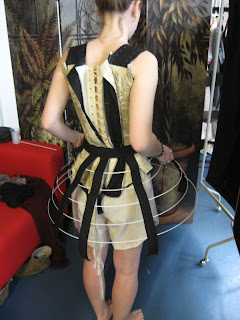 |
| Hayman, F. (1741-42) The Milkmaid's Garland, or Humours of May Day. London, British Galleries, Room 52F. |
 | |
| Kyoto Costume Institute. (2002) Fashion: A History from the 18th Century to 20th Century. Hong Kong: Taschen. |
All My Favourites:
Above Image:
Top Left and Top Centre: Coppola, S. (2006) Marie Antoinette. [Digital Video Disc]. USA: Columbia
Pictures Corporation.
Top Right: Kyoto Costume Institute. (2002) Fashion: A History from the 18th Century to 20th
Century. Hong Kong: Taschen.
Centre: Arnold, J. (1964) Patterns of Fashion I: English Women's Dresses and Their Construction C.
1660-1860. Great Britain: MacMillan Publishers Ltd.
Bottom Left: Gainsborough, T. Mr. and Mrs. William Hallet ('The Morning Walk'). (1785) [Online
Image] Available from: http://www.nationalgallery.org.uk/paintings/thomas-gainsborough-
mr-and mrs-william-hallett-the-morning-walk. [Accessed 27 February 2012].
Bottom Right: Dibb, S. (2008) The Duchess. [Digital Video Disc]. United Kingdom, Paramount Vantage.

















































